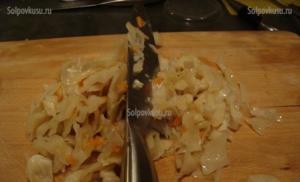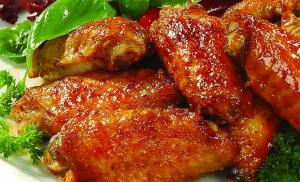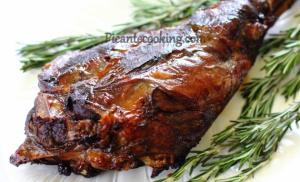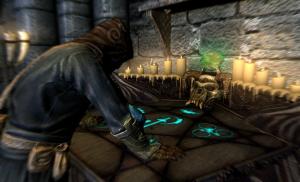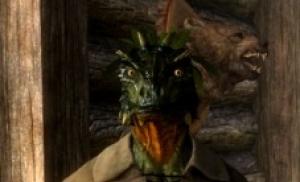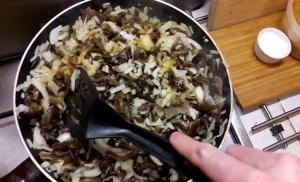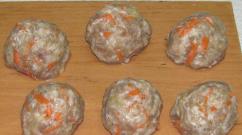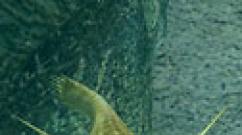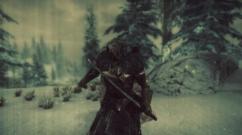Edible mushrooms and plants. How to distinguish edible from inedible mushrooms
When harvesting mushrooms, you need to be extremely careful, because along with edible specimens, inedible, and sometimes even poisonous, representatives grow in the vastness of their native land. Eating such mushrooms can lead to severe poisoning, there are often cases when such an ailment is fatal. To know which mushrooms are poisonous, you need to carefully study the catalogs of inedible mushrooms, you should not collect suspicious or little-known specimens.
Death cap

Another name for the mushroom is green fly agaric, its cap grows in scope from 6 to 12 centimeters, the skin color is yellow-brown-olive, pale green, very rarely the outer surface is almost white. The shape of the cap is ovoid at first, then flat-convex, and at the end it becomes completely prostrate. White warty flakes can be seen on the skin. The spore-bearing layer consists of wide free plates that do not change color. The leg is in the form of a cylinder with a thickening at the bottom, its height is 8-15 centimeters, painted in a white-yellow or white-green shade. White flesh does not change color when cut.
Valuy false (Shitty mushroom)

The shape of the cap of young specimens is convex-rounded, the edges are tucked, the diameter is about 8-10 centimeters, the more mature ones have a flat shape with a tubercle in the center, the skin is smooth, sticky, the surface color varies from light yellow to brown, and the edges almost always remain white. There is a mealy bloom on the leg, it grows up to 9 centimeters in height and 2 centimeters in thickness. The structure of the flesh is dense, creamy or white in color, has an unpleasant odor, it is a bit like the smell of potatoes or turnips. The lamellar layer is adherent, light gray in young animals then gradually darkens.
Fiber patuillard

The fungus is a mortal danger to the human body. The scope of the cap is 3-9 centimeters, it is painted in red-yellow shades, there are radial fibers on the skin, its shape changes from bell-conical to completely outstretched. Frequent, loose plates have a white color with a touch of an olive-brown hue, turn red when pressed. The leg has the shape of a cylinder, the length does not exceed 7 centimeters, the diameter is 1-2 centimeters, the color is usually slightly lighter than the surface of the cap. The whitish pulp does not have a strong odor, but the taste is unpleasant, it turns red when cut.
Galerina bordered

The convex or bell-shaped cap has a brown color with a yellow tint, in mature specimens the shape is flat, the edges are translucent and you can see grooves located in parallel. Narrow plates descending to the stem, at the beginning of growth are colored in light tones, when the spores mature, they acquire a brownish-rusty hue. The brown leg is thin and not too long, only 4-5 centimeters, a yellow ring is located on top, it disappears with age, above it the leg is covered with a mealy bloom. The pulp has a mealy odor, brown in the stem and yellow in the cap. This type of inedible poisonous mushrooms can often be found in the forests of the Kuban.
Gymnopilus of Juno

This species belongs to hallucinogenic mushrooms. The scope of the cap is 3-15 centimeters, hemispherical in young animals, later transformed into a convex or outstretched one. The fine-flaked surface is colored orange or ocher yellow. The plates are often located, wide, yellow in very young specimens and brown-rusty with age, the flesh has a pronounced almond smell, its color is pale yellow with a brown tint. The leg grows from 3 to 20 centimeters in length, the thickness does not exceed 4 centimeters, thickened at the base, the color is brown, there is a small filmy ring.
Whitish talker

The diameter of the cap is 2-7 centimeters, the surface is pronounced mealy, the convex shape transforms with age into a prostrate or funnel-shaped. On the skin of an off-white color, dark spots can be seen, the wavy edge of the young is tucked up. The plates running down on the leg are often located, their color is cream or pale gray, pink-yellow in old specimens. Basically, the leg is even, but it can bend slightly, it does not grow more than 5 centimeters in height and 0.7 centimeters in thickness, it is painted pale brown or white. The white pulp does not tend to change color at the break.
Milk papillary

The size of the mushroom cap is 3-9 centimeters, centric circles can be seen on the skin, the surface color is dark brown with a clear tint of a purple hue. Basically, the shape of the cap is flat, and the edges are tucked up, sometimes there is a small tubercle in the center. The plates are frequent, white, in old mushrooms they are often yellow-cream. The stem is short but massive, becoming hollow as it matures. When pressed on the outer part of the cap, a distinct brown spot appears.
Gall mushroom

It can grow singly or in large groups, it looks like a porcini mushroom, the leg is strong and massive, the pulp is fibrous, the thickness reaches 7 centimeters, there is a dense brown mesh on the skin. The hat is a spongy formation, in the upper part it has a thin layer of porous substance, at first the hemispherical shape looks more like a saucer with age. The surface is painted in a pale brown or rich ocher shade. Insects do not damage this species - this is another sign by which this poisonous mushroom can be cured.
Greenfinch

The outer surface of the cap has a bright green color, it is convex, and there is a characteristic tubercle in the center; at a more mature age, frequent scales can be observed on the skin, the diameter of the cap is 12-15 centimeters. The maximum height of the leg is 3 centimeters and about 2 centimeters thick, the surface is colored green and less often yellow. The plates are densely arranged, their color varies from yellow to lemon, the spore-bearing layer is characterized by a distinct smell of flour. The flesh on the cut is white, but soon changes color to yellow. This is one of the most common inedible types of mushrooms that mushroom pickers stumble upon in the Rostov region.
Umbrella comb (Lepiota)

The size of the cap of even an adult mushroom does not exceed 4 centimeters, in young animals it looks like an inverted bell, later straightens out more and more, the outer surface is dry and velvety covered with scales, the color is pink or gray, and in mature specimens it is deep brown. The plates are small and break easily, a thin leg grows about 5 centimeters in length, the surface is silky, in the middle you can see the remains of a ring, which is almost invisible in old mushrooms. A distinctive feature is the rapidly reddening pulp on the cut, which has an unpleasant smell of rotten garlic.
False Pig (Thin)

The hat has a smooth surface, reaches 6-14 centimeters in span, the edge is lowered and velvety, its shape is rounded, but the center is slightly depressed, the skin is olive-brown when the mushroom is still young and eventually acquires a gray or rusty brown hue. The surface is usually dry, but becomes sticky when the humidity rises. The plates descending to the leg have a brownish-yellow color; when pressed, they acquire a deep brown hue. The color of the stem is usually identical to the skin of the cap, does not grow more than 9 centimeters in height and 2.5 centimeters in thickness, thickened at the base. The soft pulp has a dense structure, it is yellow-brown or light yellow, but when pressed quickly darkens.
False chanterelles

A small mushroom cap in diameter is only 1-6 centimeters, flat at the beginning of growth, later becomes funnel-shaped, the edge is lowered, the center is depressed, the skin is velvety, painted in a bright orange color with a yellow or red tint, fades with age. The leg is even and thin, no more than 6 centimeters long, sometimes bends under the weight of the cap, the skin color is identical to the cap only at the base; it is darker, sometimes almost black. The branched plates are often located, descending to the stem, the pulp has a mushroom odor, its color is white with a yellow tint.
Miller pink-gray

A rounded cap is flat or convex, the edges are usually bent, ripening, it transforms into a funnel-shaped, the edges are straightened, but a tubercle remains in the center, a diameter of 13-15 centimeters, the skin is dry and velvety to the touch, its shade is brown or gray-pink, rarely yellow-sandy. A smooth leg has a smooth skin, usually slightly lighter than the outer surface of the cap, in young animals there are no cavities inside, the leg length is 5-9 centimeters, the diameter is 2-3 centimeters. The thick flesh is quite fragile, does not change color on the cut, but gives off milky juice, the color is almost white, sometimes with a yellow tint, has a distinct spice smell and tastes bitter.
Thorny milky

The thin-fleshy cap has a flat shape, thin veins can be seen on the skin, in mature specimens it transforms into a flat-spread, and in the center there is a papillary tubercle with a sharp end. The edges of the cap are lowered, slightly ribbed, sometimes straight, the color of the outer surface is red-pink, carmine or lilac-red, small scales are present. The plates are forked, narrow, frequent, descending, pink-ocher tint turns brown when pressed. The mauve leg tapers closer to the base in length reaching 2-6 centimeters, the thickness does not exceed 1 centimeter. The pale white flesh turns green when pressed.
Amanita muscaria (Smelly)

The wide hat resembles a curved saucer, the outer part is smooth and shiny, usually its shade is light cream or white. The leg is usually no longer than 13 centimeters and no thicker than 4 centimeters, thickened in the place where it is attached to the cap, sometimes you can see the remnants of the ring, the skin is rough, there is a sticky coating. The pulp is white and contains contact poisons, you cannot touch such a mushroom. In case of contact, immediately wash your hands thoroughly. In the Belgorod region, this inedible mushroom, along with others, is much more common.
Amanita muscaria

As it grows, the cap transforms from spherical to round-flat and flat, its span is about 10-19 centimeters, the color of the outer part is bright orange and many shades of red, white scales are present on the skin, but rain can wash them off. The pulp smells pleasant, pale yellow or white, uneven, thick, frequent plates of the spore-bearing layer are white and turn yellow as the mushroom ripens. The shape of the leg is cylindrical, tuberous at the base, in addition, it is covered with several rows of scales, a filmy ring can be seen on top of the leg, it hangs in mature specimens, the girth does not exceed 4 centimeters, the length is about 8-20 centimeters. Often this inedible type of mushroom is found by mushroom pickers of the Leningrad region.
Amanita muscaria

Usually the color of the cap is brown, but specimens with a brown, gray or dirty olive skin are often found, on the surface there are white concentric warts that are easily separated from the cap. In young animals, a rounded-convex cap is formed, in mature mushrooms it is semi-spread, with a diameter of 6-12 centimeters. The plates are free, the caps expand nearby, the pulp is watery and with an unpleasant odor. The height of the leg varies from 5 to 11 centimeters, in the girth - 1-2 centimeters, the surface is fleecy, tuberous-swollen at the base, a ring is noticeable on the skin.
Amanita muscaria

The color of the cap changes with the age of the mushroom from white to green-yellow, the diameter is 4-9 centimeters, the hemispherical shape is replaced by a flat-convex one, on the outer surface you can see small flakes of a gray shade - these are the remains of the bedspread. The pulp has a distinct smell and resembles a raw potato, its color is white and does not change at the break. Narrow, loose plates are yellow or white. The leg is in the shape of a cylinder, 1-2 centimeters thick, 5-11 centimeters high, usually colored in tone with the outer part of the cap, there is a noticeable hanging ring.
Alder fire

The mushroom grows in large groups, the spherical cap, when ripe, transforms into a conical one, and later it looks like a small (5 centimeters) saucer, the outer side is covered with lemon scales, like the skin of the cap. Small, thin, often planted plates change the yellow-lemon color to darker ones. There is no ring on the high and thin leg, the surface of the skin is colored to match the cap, the flesh does not lose color on the cut.
Fake mushroom brick-red

At the beginning of growth, the rounded cap is bright orange, as it ripens, it already looks like a saucer takes on a red-brick tint, at the edges there are scraps of a covering blanket in the form of large flakes. The leg is long, and the thickness does not exceed 2 centimeters. The ring, which is inherent in the present brass, is absent.
False honey fungus

The span of a convex bell-shaped cap is 2-6 centimeters, when ripe, it takes a flat shape, the surface is smooth, the color ranges from yellow-brown to sulfur-yellow, and the edges are always lighter, the center can be red-brown. Frequent, wide blades are yellow-green or brown-olive in color. In thickness, the leg does not exceed 1 centimeter, in height it reaches 10 centimeters, the cylindrical shape is narrowed at the base. Fibrous pulp with an unpleasant odor and bitter taste, colored in sulfur-yellow.
Pepper mushroom

The convex-rounded cap with a diameter of 2-8 centimeters as it grows takes on an almost flat shape, the outer part is velvety, dry and shines in the sun, becomes covered with mucus when the humidity rises. The color of the outer surface of the cap is copper, orange, light brown, brown or red. The pulp has a yellow sulfur color, takes on a more red tint at the fracture. The length of the slightly curved leg is 4-9 centimeters, in the girth is no more than 1.5 centimeters, tapers closer to the base, usually the shade of the surface is identical to the cap. The tubules are adherent, descending, the pores are large, their color is brownish-red.
Lattice red

The mushroom has no cap and leg, the fruiting body at the beginning of growth is ovoid, about 6 centimeters in height and 5 centimeters in width, covered with a brown or white leathery membrane, under which there is a mucous-gelatinous layer, a dome-shaped reticular structure is formed in the depths of the fungus. When ripe, the outer surface of the shell bursts and the mushroom takes the form of a bright sphere with irregularly shaped cells. The surface inside the sphere is covered with a mucous dark spore mass, it has a pungent putrid odor.
Satanic mushroom

The species is quite large, the span of a hemispherical cap is 10-25 centimeters, the outer part is velvety and dry, the skin is dirty grayish or white, sometimes with a yellow tint and pale green stains. The tubular layer is yellow in young animals and yellow-green in mature representatives, small pores change color from yellow to red-orange, when pressed, sometimes turn blue with a clear green tint. The leg is barrel-shaped and massive, about 7-15 centimeters high and 3 to 9 centimeters thick, painted pale yellow on top, red-orange in the middle, there is a mesh pattern. The pulp is creamy, it slowly turns red at the break, over time it turns blue altogether.
The pig is fat

The hat has a brown or rusty-brown color, the center is depressed, the edges are wrapped inward, gradually transforms and takes on a convex appearance, and the color changes to brown-olive, 15-25 centimeters in diameter, the surface is dry and velvety. The creamy plates fall on the stem, turn brown when pressed, the tough pulp has a dense structure, turns brown on the cut. The fleshy leg is widened at the base, the skin is dark brown, velvety, about 3-5 centimeters wide, 5-10 centimeters high.
Russula maiden

The thin-fleshy cap reaches 3-6 centimeters in diameter, at the early stage of growth it is semicircular and then gradually transforms into flat-spread, and at maturity it is concave-spread. The shade of the outer part is purple-pink, brown-lilac or violet-purple. The plates are thin, narrow, attached, forked from the stem, at first white or creamy, later turning yellow. The leg is more often cylindrical than clavate, 5-7 centimeters high, 1-1.5 centimeters in diameter, white or yellow with a distinct mealy odor. The fragile white pulp turns yellow within 8-10 hours, fresh in taste.
Burning russula (Vomiting)

The smooth, shiny surface of the cap is painted in a bright scarlet color, there is a dark speck in the middle, the span is from 3 to 10 centimeters. In young stock, it is convex, when ripe, it takes a flat shape or cracks, the middle is usually depressed, radial grooves can be seen along the edges. The plates are adherent, rare, their color is deep white and only in the oldest specimens they are cream. The club-shaped leg is also white, sometimes with a pink tinge, it grows about 2 centimeters thick, 7-9 centimeters high, the skin is covered with bloom. The pulp does not have a strong odor, is white and does not lose color when cut.
Entoloma poisonous

The cap of the mushroom is quite wide and flat, as it ripens, the span can be 20-22 centimeters, the outer part is silky, covered with mucus when the humidity rises, the skin tone varies from yellow to brown. Powerful plates are rarely located, at first they are creamy, later turn pink. The pulp at the break is dense, white, has a pronounced smell of fresh flour. The flexible, fibrous stem grows up to 11 centimeters in length, but does not exceed 2.5 centimeters in thickness.
Mushrooms are a very specific "gift from the forest" when considered as food for humans. In addition to chanterelles, milk mushrooms, russula, butter mushrooms, mushrooms and truffles, there are also such types of mushrooms in nature that can greatly undermine human health and even kill him. Therefore, it will be extremely useful to know how inedible mushrooms differ from edible ones.
Characteristics of dangerous mushrooms
Almost every season there is news about poisoning as a result of eating one or another type of inedible mushroom. Most often this happens due to the fact that outwardly they can very much resemble their edible "brothers". In some cases, even experienced foresters cannot distinguish, for example, a porcini mushroom from a gall mushroom.
Therefore, before you rejoice at a find in the forest and put it in your basket, you need to know by what signs you can distinguish a poisonous and unusable mushroom from an ordinary one. Some useful tips include the following:
Toadstools also have a tough, rubbery feel.
The variegated color (like in orange aleuria) and the unusual shape of the cap can also speak in favor of the fact that these gifts of the forest cannot be collected. Moreover, it is not at all necessary that they will be exactly harmful or poisonous - bad mushrooms can spoil the soup or the second dish with their bitterness and specific smell.
If the stem of the mushroom is cut off, the flesh does not change in color. The smell and taste of the product are barely noticeable and do not cause disgust in a person. Sometimes there may be no smell at all. On the stem itself there is a thickening or a ring, by which you can often distinguish a mushroom from a champignon or a green russula. There were cases when careless mushroom pickers cut off practically one cap, leaving the main distinguishing feature (ring) on the ground, which subsequently led to poisoning.
Also, a distinctive feature is the presence of a volva - a kind of sac at the base of the mushroom. A white or greenish color of the plates under the cap indicates a toadstool, while a pinkish or dark shade speaks in favor of a mushroom. manifests itself long after eating it (after 5, 10 or even 20 hours) and is characterized by continuous vomiting, intestinal colic, pain throughout the body, as well as bloody diarrhea and thirst.
Its typical habitat is mixed or deciduous forests. It can be found both growing singly and as part of a family. It can be confused with a May ryadovka, a hangover, a smoky gossip, and also with an ordinary champignon.
When intoxication with this fungus, severe irritation of the mucous membrane of the gastrointestinal tract occurs, which leads to diarrhea, as well as cutting pains in the abdominal region. If a large amount of poisonous enthol was eaten, then a fatal outcome or the occurrence of serious pathologies of the intestine and liver is very likely.
Welcome to the blog. The mushroom season is in full swing, so our topic today will be edible mushrooms, the photos and names of which you will find below. In our vast country, there are many types of mushrooms, so even experienced mushroom pickers cannot always distinguish edible from inedible. But false and poisonous species can ruin your dish, and in some cases even cause death.
In the article you will find out what edible mushrooms are, what types they are divided into, where they grow and what they look like, which mushrooms appear first. I will tell you what benefits they have for your body and what their nutritional value is.
All mushrooms are divided into three main sections: edible, conditionally edible, inedible (poisonous, hallucinogenic). All these are cap mushrooms, they make up only a small part of the vast kingdom.
They can be divided according to many criteria. The structure of the cap is of the greatest importance for us, since sometimes it is different for twins.
Share:
- tubular (spongy) - the bottom of the cap consists of the smallest tubes, resembles a sponge;
- lamellar - plates at the bottom of the cap, located radially;
- marsupials (morels) - wrinkled caps.
You can also divide forest gifts by taste, by the method of spore formation, shape, color, the nature of the surface of the cap and leg.
When and where mushrooms grow
In Russia and the CIS countries, mushroom areas are found almost throughout the territory, from the tundra to the steppe zones. Mushrooms grow best in humus-rich soil that warms up well. The gifts of the forest do not like strong waterlogging and excessive dryness. The best places for them are in the clearing, where there is shade, on the edges, forest roads, in plantings and copses.

If the summer is rainy, mushroom places should be looked for on a hill, and if it is dry, near trees in the lowlands, where there is more moisture. Typically, specific species grow near specific trees. For example, camelina grows near pines and spruce; white - near birch, pines, oak; aspen boletus.
Mushrooms in different climatic zones appear at different times, one after the other. Let's analyze the middle lane:
- The first spring forest harvest - stitches and morels (April, May).
- In early June, boletus, boletus, boletus, russula appear. The duration of the wave is about 2 weeks.
- From mid-July, the second wave begins, which lasts 2-3 weeks. In rainy years, there is no break between the June and July waves. The mass appearance of the mushroom harvest begins in July.
- August is marked by the massive growth of mushrooms, especially white ones.
- From mid-August and early autumn, chanterelles, mushrooms, milk mushrooms grow in huge families in favorable weather.
In deciduous forests, the main season lasts from June to October, and from November to March, winter mushrooms can be found in the forests. In the steppes, field mushrooms are more common: umbrellas, champignons, a raincoat, meadow mushrooms. The season is from June to November.
Mushroom composition, benefits
The mushroom composition contains up to 90% water, and the dry part is predominantly protein. That is why the gifts of the forest are often called "forest meat" or "forest bread".

The nutritional value:
- The mushroom protein contains almost all amino acids, and even essential ones. Mushrooms are an important part of the diet, however, due to the fungin content, it is better to exclude them from the menu for people suffering from kidney, liver and gastrointestinal tract diseases.
- There is much less carbohydrates in "forest meat" than protein. Mushroom carbohydrates differ from vegetable ones and are better absorbed, similar to milk or bread.
- Fatty substances are absorbed like animal fats by 92-97%.
- The composition contains tartaric, fumaric, citric, malic and other acids.
- The composition contains a large amount of vitamins PP, B1, A. Some varieties contain B2, C, D.
- Mushrooms are rich in iron, phosphorus, calcium, sodium, potassium.
- The composition contains trace elements - zinc, fluorine, manganese, iodine, copper.
The edible gifts of the forest have many benefits, since ancient times they have been used to treat diseases. Now it is healthy and tasty food, and vegetarians replace meat with them.
Mushrooms are able to increase immunity, cleanse blood vessels and lower cholesterol levels, fight depression and obesity. They help maintain the beauty of hair, skin and nails. More details about contraindications and beneficial properties of mushrooms on our website.
How to determine whether a mushroom is edible or not
How to distinguish edible mushrooms from inedible ones? After all, almost everyone knows boletus, but in the forest there are rare and unusual specimens. There are many ways.

For example, in my childhood I had an interesting encyclopedia with pictures and descriptions, plus I always went to the forest with experienced mushroom pickers. By the way, this is the best idea to take with you to the forest a person who understands mushroom matters.
A few general tips:
- Take a closer look, if you see worms in at least one mushroom from the mycelium, they are edible.
- Tubular views are easier to distinguish from twins.
- Examine the colors, white and greenish often indicate a poisonous twin.
- Do not taste mushrooms, they are not always bitter, for example, pale toadstool, a little sweet. Such an experiment can result in poisoning.
- On false and poisonous doubles, a skirt is often found.
These are just a few of the signs. Basically, each pair of doubles has its own differences. You should pay attention to the frequency of the plates at the bottom of the cap, attachment to the stem, color, pulp when cut, the presence of rings. Below you will find the photo and the name of the edible mushroom with a short description.
What edible mushrooms look like
White mushroom (boletus)
The mushroom king has a light leg, the sponge under the cap is creamy and white in color. If you break the hat, it will not darken. He has several false and venomous twins. For example, in a satanic mushroom, a fracture will turn blue, and in a gall mushroom it will turn pink, a broken leg will be covered with a dark mesh.

Boletus (redhead)
In most cases, the boletus has a red cap, dense flesh and leg. When broken, the cut is bluish or white, and for the false redhead it is red or pink.

Boletus (boletus)
The color of the cap ranges from dark brown to light beige. has an elongated leg with a gray mesh, and does not change color when cut. The false mushroom has a dirty white or pink sponge, and its hat is gray or pinkish.

A rather massive mushroom with a velvet pillow-like cap, with lemon-yellow flesh. The leg at the base is red, and blue at the cut. It is confused with a satanic mushroom, but it is lighter in color.

A real chanterelle has a color from pale pink to orange, its edges are wavy, corrugated, and under the cap there are plates. In the false version, the color ranges from orange to red. The edges are jewelry even, and when broken, a white juice is released.

Butter is a yellow mushroom with a slippery spongy cap, which is connected to the stem by a film. In false oil, the cap is dark, sometimes with a purple tint, under it there are plates. The peel of the latter does not stretch when removed, and the flesh turns red.

The flywheel is spongy, the sponge is bright yellow. In his "youth", his hat is convex velvet, and over time, it straightens and cracks. Her color ranges from dark green to burgundy. The leg does not have any special inclusions, and when broken, the color does not change. It is often confused with pepper, gall, and chestnut mushrooms. The main difference between the flywheel is that it grows on moss.

The original is beige or cream colored, the plates are dark brown and the skirt. Champignon grows in well-lit places. You can confuse a popular mushroom with a pale toadstool or a smelly fly agaric, and they are deadly poisonous. The toadstool has light plates, but there is no skirt under the hat.

There are light cream and brown shades, they have skirts on the leg, and scales on the cap, they are lamellar, grow on stumps. False mushrooms are brighter, they do not have a film ring.

In young russula, the hat is spherical, while in mature it is flat, dry to the touch, matte or shiny. The color changes from green to red. The plates are fragile, varying in size, frequent, yellow or white. The pulp is fragile white, changes color when cut. If the russula is bright red or purple, chances are you have a double in front of you.

Raincoat (hare potatoes, flap)
A real raincoat is shaped like a ball, often with a small foot. Its color is white or beige. The pulp is dense, white. In a false raincoat, the flesh has a purple hue, the skin is dark.

They grow more often near pines and larches. Over time, the hat begins to resemble a funnel, its color is orange, red or bluish green. It is smooth and sticky. The slice turns green over time.

It has a flat pink hat with a recess in the center and a discreet pattern with circles, the edges are bent inward. The pulp is white, dense, the juice is also white. The color does not change when notched. The twins often have scales, a greenish color, distinct from the white flesh.

Webcap (pribolotnik)
It has a beautiful appearance, bright yellow color. The shape of the cap is correct, round, it hides the plates. An adult spider web resembles a toadstool. False doubles have an unpleasant odor, irregular shapes and are covered with scales.

The umbrella got its name due to the long leg and characteristic shape of the cap, at first the shape is spherical, then it resembles an umbrella. The color is white, with a shade of beige, there is a darker spot in the center, and the surface is cracked. Plates darken with age. Many twins, which differ in color, can have a pungent odor and friable flesh.

Talkers
At first, the talker's hat has a hemispherical shape, then depressed, resembling a funnel. It is dry and smooth, white, light brown, ocher in color, the center is darker. The plates are white, but darken with age. The pulp is white, dense, although it looses with age. False talkers are white.

Rows
Lamellar mushrooms have earned their name because they grow in rows or circles (witch's circles). The hat of a young ryadovka resembles a ball, and then straightens. It has white, brown, red, yellow colors. Edges can be curved, straight, or curved. The skin can be dry, velvety or smooth, slimy. The leg is velvety, often has a pink-brown color. The poisonous twin has a dirty gray color, be careful!

Lines
It is more often found in a pine forest; due to possible frost, black spots appear on its cap. The cap itself grows together with the leg, has a winding shape. It is brown, brown, reddish or yellow in color. The older the lines, the lighter the hat. The leg is also not even, and the flesh is white and breaks easily.

Morel
The surface of the morel cap, as if all in cells, has an ovoid shape. Its color is grayish, yellow and brown. The flesh of morel is white, soft, and the stem is cylindrical, slightly thickened towards the bottom. False morel grows from an egg, gives off an unpleasant odor and is covered in mucus.

Oyster mushrooms
Oyster mushrooms grow on a tree, under each other, which is why they got this name. The cap of oyster mushrooms is smooth, sometimes wavy, gray with a purple tint. The plates are frequent, dense, and have a gray color. The edges are concave, the legs are short and dense. False oyster mushrooms are brighter and in other shades.


Now you know how to test a mushroom and find out if it is edible or not. You can go to the forest without fear. Choose only the right mushrooms and remember that even an edible mushroom can be harmful if it is old or starting to decay.
Video - edible mushrooms with a description
Leave your comments, share the article "Edible mushrooms - photo and name" with your friends on social networks. Leave the article in bookmarks so that the right mushrooms are always in front of your eyes. All the best!
Irina Kamshilina
Cooking for someone is much more pleasant than for yourself))
Content
How many lovers are waiting for the beginning of the season to stroll through the woods in search of mushrooms or lumps. Fry chanterelles, pickle milk mushrooms, pickle boletus so that you can taste it at the festive table in winter. Unfortunately, not everything ends well, if you do not know if you have collected. Every mushroom eater is obliged to arm himself with useful knowledge of how to distinguish inedible species.
How to distinguish poisonous from edible mushrooms
You should not go into the forest if you do not know how to determine if a poisonous mushroom is or not. Ask a seasoned person to take you on a quiet hunt. In the forest more often he will talk about edible varieties, show how they look. Read books or find information on websites. Only in this way will you protect your loved ones and yourself from mortal danger. Even one inedible specimen in a basket can lead to disaster if you do not distinguish it and cook it with others.
Inedible species are dangerous in that they can provoke food poisoning, disrupt the functioning of the central nervous system, and lead to death. Experienced mushroom pickers recommend following the rules when collecting:
- do not taste - you can instantly get poisoned;
- do not take if in doubt;
- do not cut dry, overripe specimens - it is difficult to determine their belonging;
- do not collect everything in the hope of finding out at home;
- visit the forest with experienced people;
- do not collect specimens with a thickened leg at the bottom;
- brush up on your knowledge of the features of the species before setting off.

What edible mushrooms look like
Seasoned lovers of quiet forest hunting know how to distinguish edible mushrooms from inedible ones. You can't go wrong, you can put the item you like in the basket, and then cook it if:
- there is a "skirt" on the leg;
- under the cap is a tubular layer;
- a pleasant smell emanates from it;
- the caps have a characteristic appearance and color for their variety;
- insects were seen on the surface - bugs and worms.
There are varieties that are very famous and popular in the middle forest zone. They are known, collected, although among them there are specimens with dangerous counterparts. Different cooking methods are required to get a unique taste. Among the favorite species should be distinguished:
- white - boletus;
- lump;
- mushroom;
- boletus;
- mushroom;
- boletus;
- oiler;
- wave;
- chanterelle;
- russula.

What are poisonous mushrooms
How to distinguish edible mushrooms from inedible ones? Poisonous varieties are often recognized by the following features:
- color - have an unusual or very bright color;
- a sticky cap in some species;
- discoloration of the leg - when cut, an unnatural color appears;
- the absence of worms and insects inside and on the surface - they do not tolerate mushroom poison;
- smell - it can be offensive, medicinal, chlorine;
- no tubular layer under the cap.
Inedible varieties contain toxic substances. It is necessary to collect very carefully, to know the special signs of dangerous specimens in order to distinguish them:
- pale toadstool - deadly poisonous, has a greenish or olive-colored cap, a leg thickened downwards;
- satanic - differs from white in red tones;
- fly agaric - has a bright hat with white dots, provokes the destruction of brain cells;
- thin pig - has hallucinogenic properties when interacting with alcohol;
- smelly fly agaric - has a chlorine smell, is very poisonous.

How to distinguish mushrooms
Among the variety of species, you can find poisonous specimens - siblings, similar to species suitable for consumption. How to distinguish between edible and inedible mushrooms in this case? The similarity can be distant or very close. The twins have the following edible varieties:
- white - satanic, bilious;
- mushrooms, boletus - pepper;
- chanterelles - false chanterelles;
- mushrooms - waxy talkers;
- mushrooms - fly agaric;
- honey mushrooms - false mushrooms.
How to distinguish a false porcini mushroom
Inexperienced mushroom pickers may confuse strong boletus with false species, although they are not very similar. A true white specimen is strong, dense, growing in groups, sometimes forming a path. Differs in a hat, the bottom is exclusively olive, yellow, white. Its pulp is firm, dense, the smell is pleasant. If you make a slice, it will be white.
There are two types of falsehoods:
- Bile - has a shade of pinkish. There is a dark mesh on the surface of the leg.
- Satanic - with a strong smell of rotten onions, it is distinguished by a velvety hat, yellow or red flesh. The leg is thickened at the bottom. It has a very bright color, which varies in height from rich red to shades of green and yellow.

How to recognize a false chanterelle mushroom
How to identify edible and inedible mushrooms, if both look bright and elegant? What are the similarities and what are the characteristics of the chanterelles? The inedible variety is characterized by:
- bright, velvety, orange-colored hat;
- smaller diameter - about 2.5 cm;
- flesh with an unpleasant odor;
- leg tapering downward;
- a funnel-like hat with straight edges;
- the absence of worms - in the composition there is chitinmannose - an anthelmintic substance.
Edible chanterelles grow in groups in mixed, coniferous forests. Often they have large specimens with a hat up to 10 cm.They are distinguished by:
- thick dense leg that is never hollow;
- the hat is down, has bumpy edges, the color is dull - from light yellow to pale orange;
- the plates are dense, go down to the leg;
- the pulp is red when pressed.

Alexander Gushchin
I can't vouch for the taste, but it will be hot :)
Content
Before going to the forest for a "quiet hunt", you need to find out the species, name, description and look at photos of edible mushrooms (eukaryotic organisms). If you examine them, you can see that the lower part of their cap is covered with a spongy structure, where spores are located. They are also called lamellar, they are very much appreciated in cooking, due to their unique taste and many useful properties.
Related Articles
- How to distinguish edible from inedible mushrooms with photos and videos. Names and descriptions of edible and inedible mushrooms
- Psilocybin mushroom - effects of use and hallucinogenic properties. How to identify a psilocybin mushroom
- Marinade for mushrooms - the best step-by-step recipes for cooking at home with a photo
Types of edible mushrooms
In nature, there are a large number of different mushrooms, some can be eaten, while others are dangerous to eat. Edibles do not threaten human health, differing from poisonous hymenophore structure, color and shape. There are several types of edible representatives of this kingdom of living nature:
- boletus;
- russula;
- chanterelles;
- milk mushrooms;
- Champignon;
- White mushrooms;
- honey mushrooms;
- rubella.

Signs of edible mushrooms
Among eukaryotic organisms, there are also poisonous, which outwardly almost do not differ from useful ones, so study the signs of their difference in order to avoid poisoning. For example, porcini mushroom is very easy to confuse with bitterness, which has an inedible bile taste. So, you can distinguish an edible mushroom from its poisonous counterparts by the following parameters:
- Place of growth, which can be learned from the description of edible and dangerous poisonous.
- A pungent unpleasant odor that poisonous specimens contain.
- Calm, discreet color, which is characteristic of representatives of the food category of eukaryotic organisms.
- Food categories do not have a characteristic stem pattern.
Popular edible
All mushrooms edible for humans are rich in glycogen, salts, carbohydrates, vitamins and a lot of minerals. This class of living nature as food has a positive effect on appetite, promotes the production of gastric juice, and improves digestion. The most famous names for edible mushrooms are:
- mushroom;
- porcini;
- boletus;
- oiler;
- boletus;
- champignon;
- chanterelle;
- mushroom;
- truffle.

This type of edible lamellar eukaryotic organisms grows on a tree and is one of the popular objects of "quiet hunting" among mushroom pickers. The size of the cap reaches 5 to 15 cm in diameter, its shape is round with the edges bent inward. In mature mushrooms, the tip is slightly convex with a tubercle in the middle. Color - from gray-yellow to brown shades, there are small scales. The pulp is dense, white in color, has a sour taste and a pleasant smell.
Autumn mushrooms have cylindrical legs, up to 2 cm in diameter and 6 to 12 cm long. The top is light, there is a white ring, the bottom of the leg is dense brown. Honey mushrooms grow from late summer (August) to mid-autumn (October) on deciduous trees, mainly on birch. They grow in wavy colonies, no more than 2 times / year, the duration of growth lasts 15 days.

Another name is yellow chanterelle. It appeared due to the color of the cap - from egg to deep yellow, sometimes faded, light, almost white. The shape of the apex is irregular, funnel-shaped, with a diameter of 6-10 cm, in young ones it is almost flat, fleshy. The flesh of the common chanterelle is dense with the same yellowish tinge, a slight mushroom smell and a sharp taste. The leg is fused with the cap, narrowed downward, up to 7 cm in length.
These edible forest mushrooms grow from June to late autumn in whole families in coniferous, mixed, deciduous forests. It can often be found in mosses. The baskets of mushroom pickers are especially full of them in July, which is the peak of growth. Chanterelles are one of the famous lamellar mushrooms that appear after rain and are eaten as a delicacy. Often they are confused with saffron milk caps, but if you compare the photos, you can see that the cap of the saffron cap is flatter, and the leg and pulp are orange, rich in color.

They are also called peppers and meadow mushrooms. These are edible cap mushrooms with a spherical convex cap in diameter from 6 to 15 cm and with brown scales. Champignons have first a white and then a brownish cap with a dry surface. The plates are whitish, slightly pink, and later brown-red with a brown tint. The leg is even, 3-10 cm long, the flesh is fleshy, with a delicate mushroom taste and smell. Champignons grow in meadows, pastures, gardens and parks, it is especially good to pick them after rain.

These edible mushrooms are very popular in cooking and are prepared in every possible way. Boletus boletus have a cap color from light gray to brown, their shape is pillow-shaped with a diameter of up to 15 cm. The flesh is white with a pleasant mushroom aroma. The leg can grow up to 15 cm in length, has a cylindrical shape, extended towards the bottom. Common boletus grows in mixed, birch forests from early summer to late autumn.

Butterlets are one of the most famous edible eukaryotic organisms. They often grow in large groups, predominantly on sandy soils. The oil cap can be up to 15 cm in diameter, has a chocolate brown color with a brown tint. The surface is slimy, easily separated from the pulp. The tubular layer is yellow, adherent to the leg, which reaches a length of up to 10 cm. The pulp is juicy white, eventually becomes yellow-lemon, thick legs. Ordinary butter dish is easily digested, therefore it is eaten fried, boiled, dried and pickled.

These edible mushrooms grow in piles, which is why they got their name. The cap is thick, cream-colored, up to 12 cm (sometimes up to 20 cm) in diameter. The plates have yellowish edges, the stem is white, cylindrical, up to 6 cm in length. The pulp is dense, white with a pronounced pleasant smell and taste. This variety grows in mixed, birch, pine forests from July to the end of September. Before going for milk mushrooms, you need to know how they look and be prepared for the fact that you will have to look for them, because they are hiding under the foliage.

Conditionally edible mushrooms
Eukaryotic organisms from this classification differ from the previous ones in that they are forbidden to eat without preliminary heat treatment. Before starting cooking, most of these specimens must be boiled several times, changing the water, and some must be soaked and fried. Check out the list of mushrooms that belong to this group:
- coppice champignon;
- morel cap;
- spherical sarcosoma;
- the webcap is blue;
- the chanterelle is false;
- pink wave;
- discina thyroid and others.

It can be found in summer and autumn in coniferous, deciduous forests. The diameter of the cap is from 3 to 6 cm, it is painted in a bright orange color with a brown tint, has a funnel-shaped shape. The flesh of the false chanterelle is soft, viscous, without a pronounced smell or taste. The plates are orange in color, frequent, descending along a thin yellow-orange stalk. The false chanterelle is not a poisonous one, but it can disturb digestion, sometimes it has an unpleasant woody taste. Mostly hats are eaten.

This eukaryotic organism has several names: Volnyanka, Volzhanka, Volzhanka, Rubella, etc. The cap of the Volnushka has the shape of a funnel with a sunken center, the color is pink-orange, the diameter is up to 10 cm.The leg is cylindrical, tapering to the bottom, up to 6 cm in length ... The pulp of the wave is fragile, whitish in color, if damaged, a light juice and a pungent odor will appear. Grows in mixed or birch forests (usually in groups) from late July to mid-September.

The color of this eukaryotic organism depends on its age. Young specimens are dark, brown, and brighten with age. The cap of the morel cap resembles a walnut, all dotted with uneven stripes, wrinkles that look like convolutions. Its leg is cylindrical, always curved. The pulp is similar to cotton wool with a specific smell of dampness. Morel caps grow on wet soil, next to streams, ditches, water. The harvest peaks in April-May.

Little known edible mushrooms
There are different varieties of edible mushrooms, and when you come to the forest you need to know which of them may be considered inedible. To do this, before the "quiet hunt", be sure to study the photographs and descriptions of eukaryotic organisms. There are such rare specimens that it is not immediately clear what they are - poisonous inedible or quite suitable for food. Here is a list of some of the lesser known edible members of this class of wildlife:
- raincoat;
- funnel-shaped talker;
- the row is purple;
- garlic;
- oyster mushroom pigeon;
- fleecy scaly;
- Polish mushroom;
- rowing gray (cockerel);
- white dung beetle and others.

It is also called a chestnut moss or a pan mushroom. It has an excellent taste and is therefore highly regarded in cooking. The cap of the flywheel is hemispherical, convex, from 5 to 15 cm in diameter; it becomes sticky in the rain. Top color is chocolate brown, chestnut. The tubular layer is yellowish, and with age - golden and greenish-yellow. The leg of the flywheel is cylindrical, it can taper or expand towards the bottom. The pulp is dense, fleshy, with a pleasant mushroom smell. The chestnut moss grows on sandy soils under coniferous trees, sometimes under an oak or chestnut tree.

Such eukaryotic organisms are presented in several types: gum-bearing, fiery, golden and others. They grow in families on dead and living trunks, on stumps, roots, in hollows, and have medicinal properties. Scale can often be found under spruce, apple, birch or aspen trees. The cap is convex, fleshy, from 5 to 15 cm in diameter, has a honey-yellow color, the flesh is pale. Leg up to 2 cm thick and up to 15 cm high, monochromatic, scaly, young specimens have a ring. Fleecy scales contain a substance used to treat gout.

The second name is ordinary non-iron. The cap is convex, with age it becomes flat, with a diameter of up to 3 cm. The color of the crown is yellow-brown, light at the edges, the surface is dense, rough. The flesh of the garlic is pale, has a rich smell of garlic, thanks to which the name appeared. When the mushroom dries, the smell is further enhanced. The leg is brown-red, light at the base, empty inside. Common non-nippers grow in large families in different forests, choosing dry sandy soil. The peak of growth is from July to October.

They are not always taken even by experienced lovers of "quiet hunting" and in vain, because the raincoats are not only tasty, but also curative. They appear in meadows and pastures after rains. The diameter of the cap is 2-5 cm, the shape is spherical, the color is white, sometimes light brown, there is a hole for spores on top. The flesh of the raincoat is dense, but at the same time tasty, juicy, becomes soft with age. Young mushrooms have thorns on the surface of the cap, which are washed off over time. The leg is small, from 1.5 to 3.5 cm in height, thickened. Raincoats grow in whole groups in parks and lawns, the peak harvest is from June to October.

Video
Found a mistake in the text? Select it, press Ctrl + Enter and we'll fix it!Discuss
Edible mushrooms: names with descriptions
